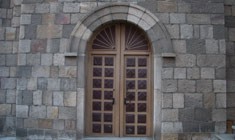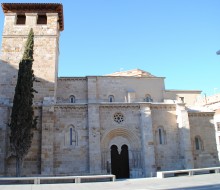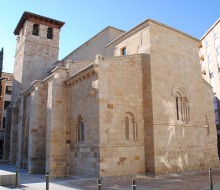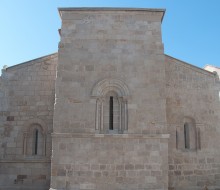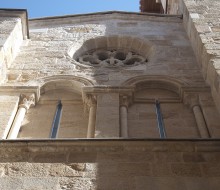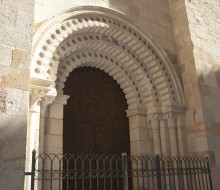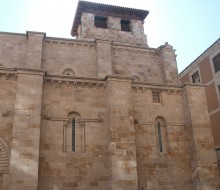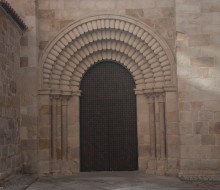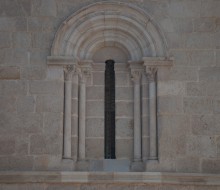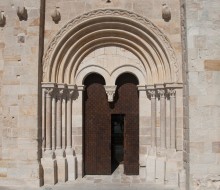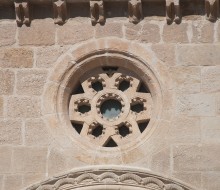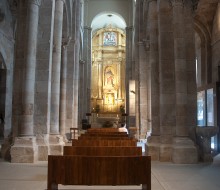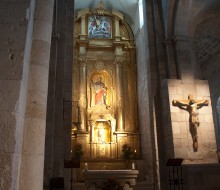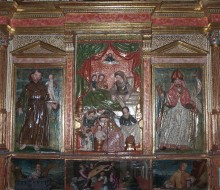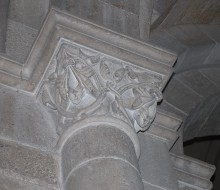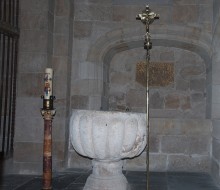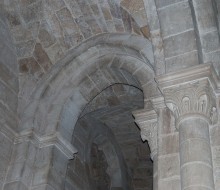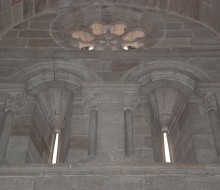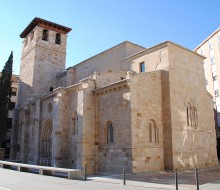Church of Santiago del Burgo
Zamora
Church of Santiago del Burgo
Zamora12th century
The construction of this church must have begun in the late 11th or early-12th century and must have ended in the late Romanesque period. It was designed to accommodate the parishioners of the new area of El Burgo, hence this temple is sometimes denominated “Santiago el Burgo”. It was built outside the walls of the first enclosure, in the new burg, but after the second enclosure surrounded it and the city grew, it was located, as at present, in Santa Clara Street, between the Constitution and Santiago Squares.
It is one of the churches which best preserves its original construction, as happens for the Cathedral of Zamora. It has a high central nave and two aisles. It is divided into four sections and contains a barrel vault and interesting capitals. The temple has three simple doorways, except for the southern, which is extremely beauty.
Originally it was answerable to Archbishopric of Santiago de Compostela, as a reward of king Alfonso VII to Diego Gelmírez for his rendered services. This issue caused problems with the Diocese of Zamora that won in the 17th century what is called “La Compostela”. Finally, in the 19th century, specifically in 1888, this situation changed and it was answerable to the Diocese of Zamora.
It has undergone several alterations, but the most important was suffered during 19th century, in order to repair the vaults that had collapsed. In the 20th century the outbuildings were demolished, what it has helped this building to be widely contemplated.
In the outside part of the southern doorway, the two archivolts are notable. They rest on three pairs of columns. Inside, there are two identical arches whose joining rests on a pendant corbel. On the door there is a rose window with double-stone-lattice window which is pierced by seven pearled circles.
The western façade has three threads full of holes and lobes, reproducing in a simplified way the doorway of the Bishop at the Cathedral and in the third section there is a rose window similar to the one of the Church of Puerta Nueva.
The north façade has four archivolts with modillions. They are possibly inspired by the doorways of the Holy Sepulchre in Jerusalem. Its rose window is equal the rose window of the southern doorway.
The inner original construction has been preserved. It has a basilica floor plan with three naves divided into four sections and three plain apses at the head part. The high central nave is covered with a barrel vault which is reinforced by transverse arches, but the wings do it with a groin vault, being separated from each other by semicircular arches which rest on pillars where small columns leaned against them. On the walls, there are several Romanesque burial inscriptions also supported by small columns. The decoration of the capitals contains mostly historical and plant motifs.
The altarpiece, dating from 1780, is dedicated to the saint called Santiago. In the left apse has been preserved the ancient Romanesque altar table and at the foot of the nave of the Gospel is the Renaissance chapel of Villareal family. It is covered with a small flamboyant Gothic vault and a great grille in the same style.
In 1915, it was classed as National Monument.
Exterior de la Iglesia de Santiago el Burgo
Interior de la Iglesia de Santiago el Burgo
En el interior, conserva su construcción original. Tiene planta basilical con tres naves divididas en cuatro tramos y en la cabecera tres ábsides planos. La nave central, de gran altura, se cubre con bóveda de cañón reforzada por arcos fajones, mientras que las laterales lo hacen con bóveda de arista, separándose entre ellas mediante arcos de medio punto que descansan en pilares a los que se adosan columnillas. En los muros existen varios lucillos sepulcrales románicos sustentados también por columnillas y la decoración de los capiteles contiene en su mayoría motivos vegetales y temas históricos.
El retablo mayor, que data de 1780, está dedicado a Santiago. En el ábside izquierdo se conserva la antigua mesa de altar románica y en los pies de la nave del evangelio, está la capilla de los Villareal de estilo renacentista; ésta se cubre con una pequeña bóveda gótica flamígera y se cierra con una excelente reja del mismo estilo.
GET DIRECTIONS
ROUTES
OPENING HOURS AND VISITS
From 1st October until 1st March:
From Tuesday to Sunday: from 10:00 to 14:00 and from 16:30 to 18:30.
Closed on Monday.
From 1st March until 30th September:
From Tuesday to Sunday: from 10:00 to 13:00 and from 17:00 to 20:00.
Closed on Monday.
GENERAL INTEREST SERVICES
Tourist offices:
- Local tourist office: It is located at 5, Arias Gonzalo Square. Tel. +34 980 533 694
- Castilla y León tourist office: It is located at 1, Príncipe de Asturias Avenue. Tel. +34 980 531 845
- Provincial tourist office: It is located at Viriato Square. Tel. +34 980 534 047
Local police: Tel. +34 980 531 245
Civil Guard (police with responsibilities outside towns): Tel. +34 980 521 100
Emergency telephone numbers: 112
- Virgen de la Concha (Hospital): Tel. +34 980 548 212
Bus station: Tel. +34 980 521 281
Train station: Tel. +34 980 521 110
Taxi: Tel. +34 630 630 630
Civil defence: Tel. +34 980 536 190
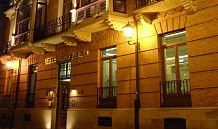
Hotel Horus
Zamora
El Hotel Horus, abierto en el año 2001, tiene un total de treinta y ocho habitaciones dobles que se dividen entre cuatro…
More info